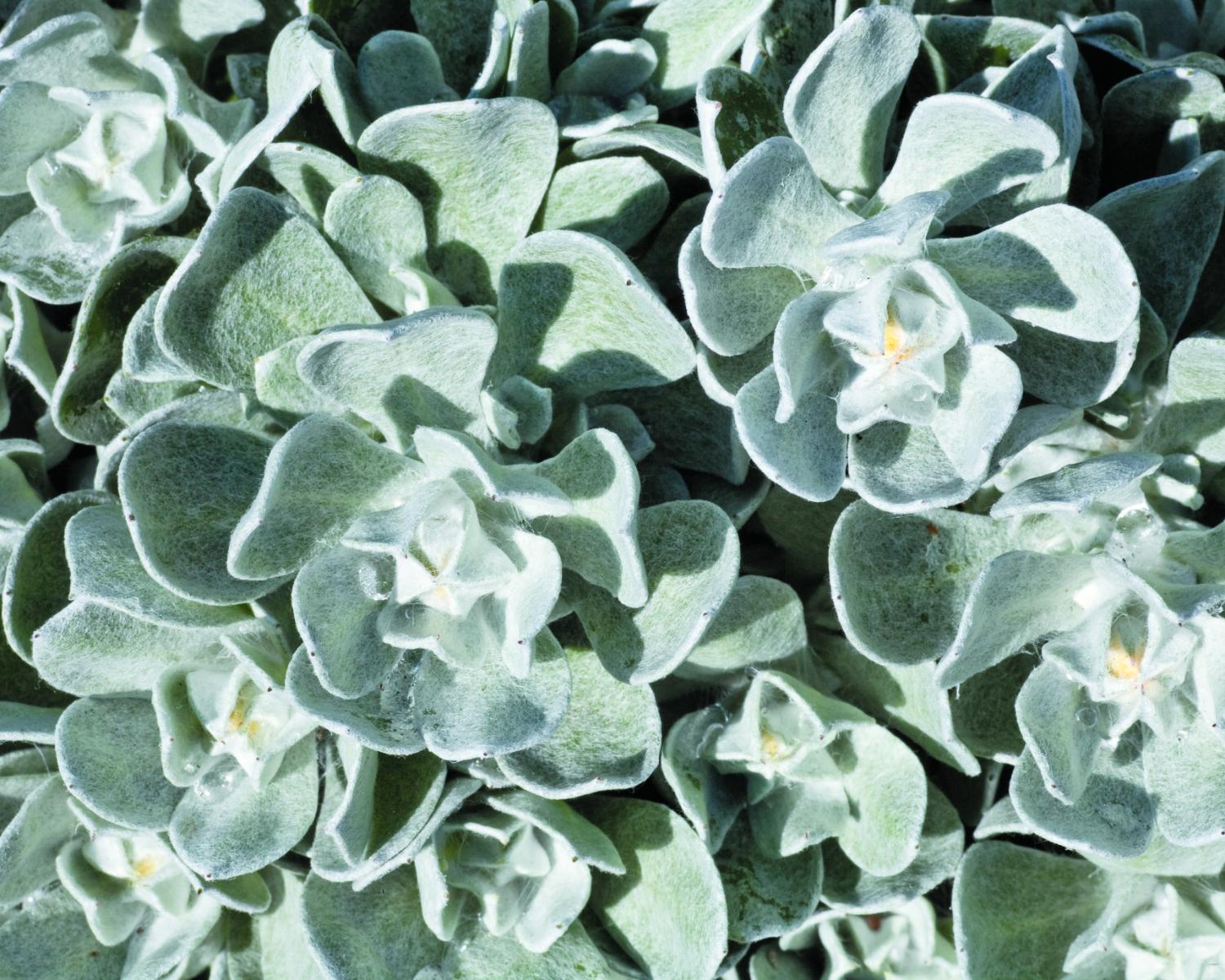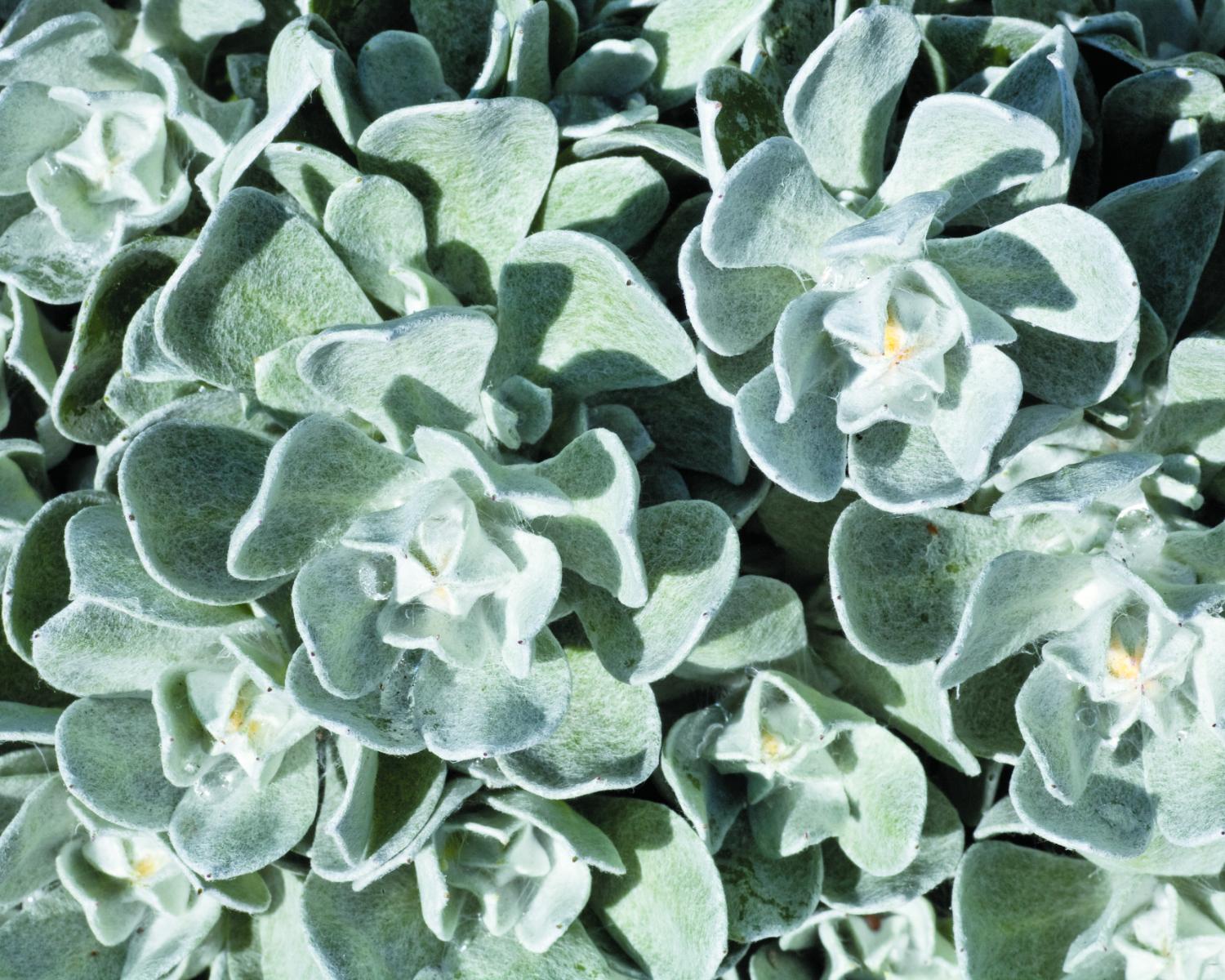
Crop Culture Report: Chrysocephalum ‘Outback Silver Sunburst’
Chrysocephalum ‘Outback Silver Sunburst’ is a beautiful foliage component from the Ecke Ranch. It has silvery leaves on a mounded, compact plant. Bright yellow flowers open on mature plants. Silver Sunburst can be used as a contrast plant in mixed containers or grown as a striking specimen plant. It is easy to grow and adaptable to a variety of container sizes. Silver Sunburst is very tolerant of high light and drought conditions and makes an excellent offering for summer.
Propagation
Silver Sunburst can be propagated in various tray sizes included 32, 50, 72, 84, and 105. Stick one cutting per cell. Typical timing in propagation is three to four weeks. Allow four weeks in early spring and three weeks in later spring. Propagate in a well-drained media that contains no peat moss. Media containing peat moss will hold too much water. Bottom heat will promote healthy root development. Maintain media at 70 to 75˚ F and monitor the temperature closely; frequent misting will cool the media. Silver Sunburst roots easily without the use of rooting hormone. Excess misting is the most likely reason for poor or slow rooting in propagation. Excess mist will turn cuttings green and result in browning of the lower foliage. On average, expect to mist cuttings for four to seven days depending on environmental conditions. Mist so that cuttings remain turgid but avoid over saturating the media. Once roots have formed mist should be eliminated or reduced significantly. Excess mist may also result in stretch. If mist levels are monitored closely plant growth regulators in propagation should not be necessary. Pinch out growing tips on Day 14 to promote branching. Begin fertilizing as roots are visible with 75-ppm nitrogen. Increase to 150 ppm as root activity increases. Choose a fertilizer with low levels of ammonium-based nitrogen and do not fertilize overhead with fertilizer containing phosphorus. Maintain media pH at 5.8 to 6.2 and the EC at 0.75 to 0.80.
Finishing
Transplant well-rooted cuttings to containers using media that is sterile with good aeration and porosity between 5 to 15 percent.
While plants are establishing avoid excess irrigation and fertilization which will lead to slow root development. Once plants are established, the media should be allowed to dry out between irrigations, however allowing mature plants to dry excessively will result in die back. Excess irrigation will result in stretch and possible disease. Begin fertilizing two weeks after transplant with a balanced fertilizer complete with minor elements. Apply 250 ppm using a fertilizer low in phosphorus. Supplemental calcium will strengthen stems. Maintain the media pH at 5.8 to 6.2 and the EC at 1.5 to 2.0. Leach to avoid excess salts.
Establish warm for best rooting. Provide an average day temperature of 68˚ F. Once plants are established provide 68 to 70˚F days and 62 to 65˚F nights. Grow Silver Sunburst warm; cooler temperatures will slow growth significantly. Silver Sunburst can be sensitive to botrytis in a humid environment. Maintain relative humidity below 70 percent.
Silver Sunburst prefers high light. Provide a minimum of 6,000 foot-candles. Do not exceed 9,000 foot-candles.
Establish plants pot tight and space when foliage begins to touch. With 4-inch or quart production it may be possible to grow Silver Sunburst pot tight until the plants are ready for sale. Silver Sunburst is a naturally compact plant and can be produced successfully without the use of plant growth regulators. Especially if careful moisture management is used, avoiding overwatering, relative humidity is low, and bright light is provided unwanted stretch should not be a concern. If plant growth regulators are needed trial products and rates on a few plants first and according to label recommendations.
If plants are produced in 4-inch or quart containers and cuttings were pinched in propagation, an additional pinch should not be necessary. In larger containers such as gallons, an additional pinch will promote full plant habit. Pinch once roots are established or 10 to 14 days after transplanting.
Insect concerns include aphids and whiteflies. Disease concerns include botrytis and root and stem rots.
Silver Sunburst is used primarily as a foliage component. Under normal greenhouse conditions Silver Sunburst will likely not flower. Plants will generally not flower until completely mature and in the garden environment.
Grower friendly and an easy addition to spring or summer lines, Silver Sunburst can be grown next to other warm crops or as a season extender.




 Video Library
Video Library 




















